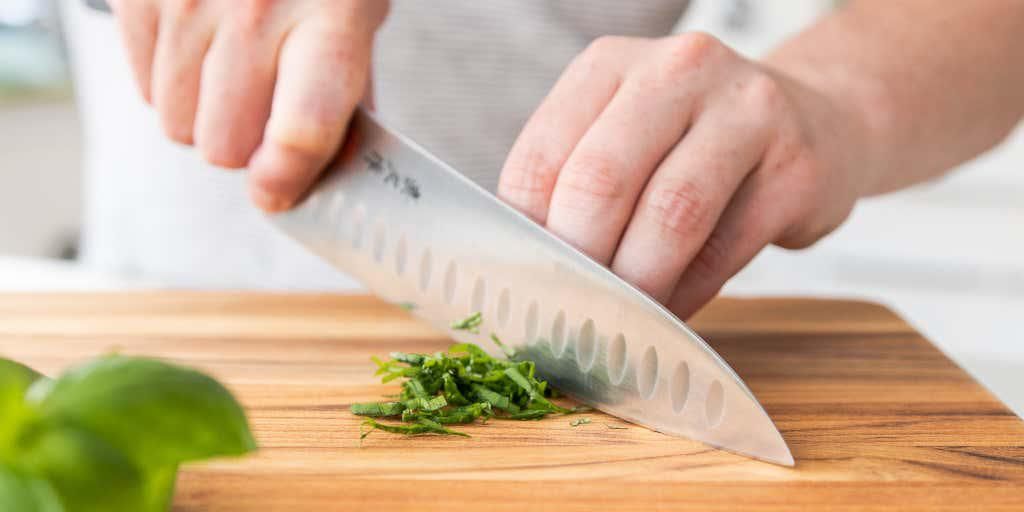After each use, wash your board with a clean soapy sponge under running water. Never immerse your board in water or place it in the dishwasher. As the USDA Food Safety and Inspection Service recommends, clean the cutting board with 1 tablespoon of odorless, liquid chlorine bleach solution.
Wash the board with plain water after using any disinfectant. After cleaning, wipe off excess water with a paper towel. Then let the board dry completely. Remember that air is needed on both sides of the board, so if your board does not have legs, push it to a vertical level so that air can reach both sides. Never let your board sit in stagnant water or on a wet counter. When the cutting board is dry, process it with a good oil prepared to protect the wooden planks. If you are looking for the best cutting board with containers contact us for more details.
Lemon juice with a clear salt helps to eliminate odors. Sprinkle the cutting board with kosher or table salt. Cut the lemons into four pieces, apply these pieces and clean the board with salt, squeeze the juice on the board as you go. Let stand for 2-3 minutes, then wipe the cutting board with a damp cloth and allow air to dry.
If your board is red and rough, sprinkle kosher or table salt on the cutting board, and then wipe off any ugly or discolored area with a clean wet sponge or towel to help absorb the salt spots. For hard stains or rough boards, try putting 120 or 150 grit combs on the board. It is very important that the tree should never exceed the grain. The sanding process will show the new wood surface on your board. When the box is finished, it is recommended to lubricate the cutting board with oil to protect the wooden planks, or you can use non-edible oil to control the moisture on the board, its drying, cracking or breaking. Can use
Although a well-preserved board does not protect against bacteria, it is a good idea to use a separate cutting board to prepare a variety of foods. For example, use one for raw meat, chicken or fish, and the other for cooked or edible foods such as salads, vegetables and bread. This ensures mutual contamination and prevents the spread of bacteria through certain foods such as e-coils.
Buying a cutting board can be confusing to choose from. Here are some suggestions on how to look or get an appointment for acne treatment.
Don't go for less that your full potential. When you go with your kitchen utensils, you get what you pay for. Of course, there are good deals to win, but choose wisely. Your cutting board is a daily companion to the strings of your past. Choose a cheap keyboard and you can lose value when the knife combination becomes a collection of precious black spatulas.
It is also important to understand that the cutting board serves a functional and aesthetic purpose. That is, if you buy an ugly board, you will hide it in the closet. If you buy a beautiful tea board, you will want to use it to enhance the aesthetic taste of your kitchen.
Material: The type of material used to make the board has a major impact on the two most important features of the cutting board: functionality and aesthetics. Most experts agree that hardwood is the best material for your forks and forks. Fortunately, they are also the most beautiful. Planting flowers, nuts and potatoes are the most popular tree choices and each of them is famous for its beauty. However, it is best to look for FSC certified trees in replanting forests. That way, you can be sure that a beautiful cutting board will not come at the cost of a beautiful forest.
Construction: Of course, standard construction is important when choosing a cutting board that lasts for decades. However, power is only half of the equation. As mentioned above, a very hard (or glue and gum) board will cause all your kitchen knives to darken quickly. It should be noted that it is cut with a knife, not with a board. Hardwood is highly valued by professional chefs, especially when it comes to the final order of the grain, due to its ability to pass through plates in minimal clothing.
Fresh grain boards give a beautiful shape, with tree growth rings appearing like log ends, but this is why chefs prefer them. The last strands of grain allow you to cut the threads attached to the tree, not the knife. This simple detail puts clothes on the patch and patch whenever you cook. For convenience, this style of construction yields significant results, especially in deep-forested areas, such as planting flowers.































